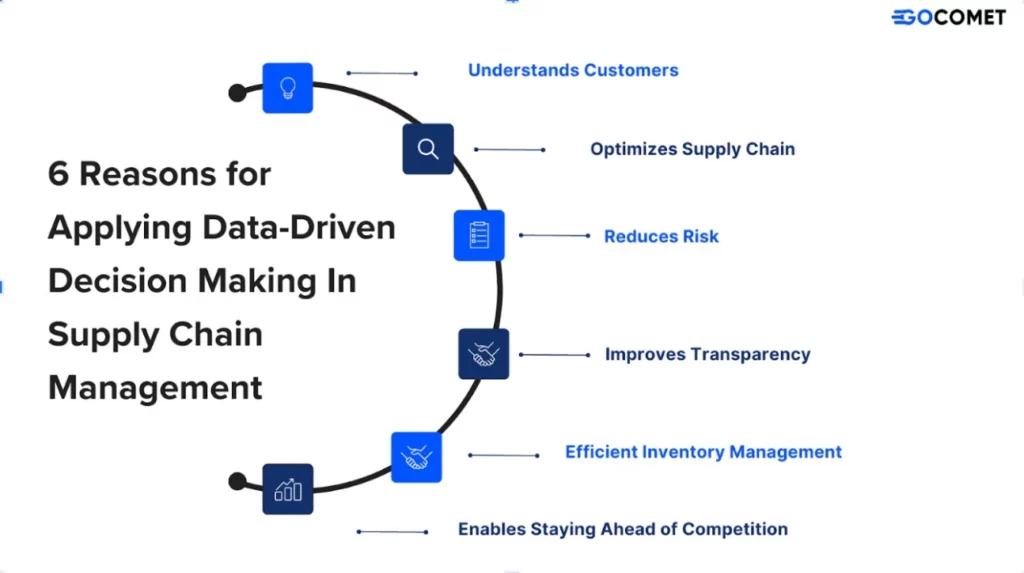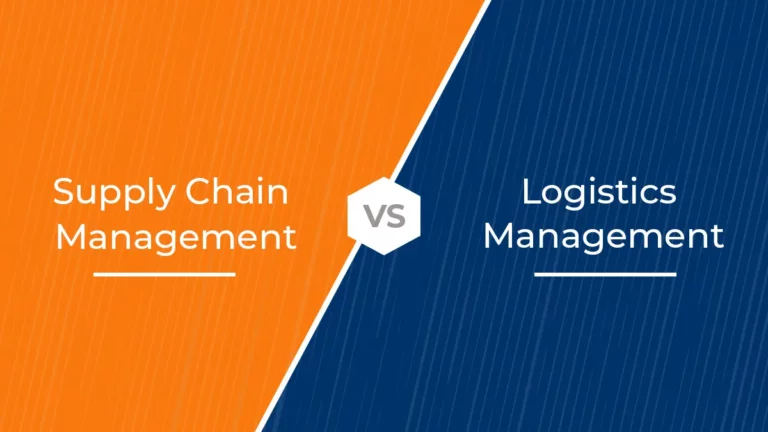6 Reasons Data-Driven Supply Chain Is the Way Forward
Are you tired of making decisions based on guesswork in your global supply chain and logistics?
You do not want to make logistics and supply chain decisions on guesswork.
As a business owner, implementing a data-driven supply chain management is imperative for staying ahead of the competition. In light of the ever-evolving trends towards automation and artificial intelligence, it is essential to adapt and embrace the power of data in today’s fast-paced business environment.
By utilizing a data-driven approach, companies can achieve a competitive advantage within the global supply chain and logistics sector. Therefore, let us explore how implementing data-driven decision-making can revolutionize your business and what challenges you need to address regarding data.
Implementing a data-driven supply chain for your global logistics can revolutionize businesses by improving demand forecasting, optimizing inventory management, enhancing supply chain visibility, and mitigating risks. However, challenges related to data availability, analysis, privacy, security, and organizational culture must be addressed to fully harness the power of data and gain a competitive advantage in this industry. Let’s get into that in more detail in this post.
Table of Contents
The Challenges of Data Management in Supply Chain
- Data quality: One of the most formidable obstacles is to ensure the provision of precise and reliable data of high quality. High-quality data is crucial in reducing supply chain disruptions. Companies should prioritize utilizing data in their supply chain processes.
- Data availability: One of the most significant challenges in supply chain decision-making is data availability. In today’s world, data is scattered across different systems in various forms, making it challenging to locate and obtain the necessary information from a single source. This issue can create complications and hinder decision-making processes in the supply chain.
- Data integration: Although the previously mentioned issues can be resolved, integrating data from multiple sources remains a complex and time-consuming task for analysis. The integration process is relatively straightforward; however, determining the right platform or source for integration is the most challenging aspect.
- Data Analysis: Analyzing data is time-consuming, and consolidating all the data onto a single platform is nearly unfeasible, making tasks challenging. Additionally, sorting and gathering data based on specific criteria can exacerbate the workload. This includes data about demographics, products, pain points, sources, and other relevant factors.
- Data security: Data security is a significant concern due to the threat of hacking by various entities. Companies are hesitant to rely on external systems and often attempt to develop their own, leading to high costs and potential inefficiencies in extracting valuable insights. Data security measures tend to be more costly than other solutions available.
- Cultural and organizational behaviour: Cultural and organizational behaviour can challenge supply chain decision-making. Stakeholders may resist changes that deviate from the established system, creating a barrier for the company. Furthermore, cultural and organizational behaviour can sometimes function independently or in conjunction, making it challenging to make decisions affecting multiple departments.
Also Read: Supply Chain Analysis: A Comprehensive Guide to Optimization
Why does Supply Chain Need to be More Data-Driven?
Data-driven supply chain management enables one to strategically leverage data and analytics to optimize and improve various aspects of the supply chain. It involves collecting, analyzing, and interpreting data from multiple sources within the supply chain to make informed decisions and drive operational excellence. Let’s delve deeper into the importance of data-driven supply chain management and what it means for businesses to adopt this approach.
It helps to enhance visibility, responsiveness, and efficiency throughout the supply chain. By harnessing the power of data, businesses can gain valuable insights into their operations, customer demand patterns, and market trends. This enables them to make data-driven decisions and take proactive measures to meet customer expectations, streamline processes, and optimize resources.
Having a data-driven supply chain management approach means that decisions are based on empirical evidence and insights derived from data analysis. It shifts the decision-making process from relying solely on intuition or guesswork to a more objective and data-backed approach eliminating the risk of biases or faulty judgements.
How Data-Driven Supply Chain Management Benefits Your Business: 6 Reasons

1. It helps you understand your customers.
Understanding your customers is the first step towards achieving success in your supply chain. By leveraging data analysis tools, you gain insight into your customers’ behaviour and preferences, allowing you to customize your logistics and supply chain processes to meet their demands.
For instance, you can use data to forecast high-demand products during specific times of the year and adjust your inventory accordingly, resulting in higher customer satisfaction and increased brand loyalty.
2. Optimizing your supply chain
Utilizing data-driven decision-making can effectively enhance your supply chain and logistics. By analyzing data from multiple sources, you can recognize supply chain bottlenecks and take appropriate measures to eliminate them. Such actions lead to more efficient operations, reduced costs, and increased profits.
Additionally, it enables accurate forecasting and predictive modelling for supply chain planning, enabling businesses to respond swiftly to market trends, adapt production, and optimize logistics to ensure optimal supply chain performance. By doing so, companies can achieve enhanced production, better transportation arrangements, and cost savings.
3. Reducing risks
The global supply chain and logistics industry is fraught with risks, such as shipment delays or damage to goods. However, leveraging appropriate data can help mitigate these risks.
For instance, by utilizing real-time data, you can effectively monitor your shipments and promptly identify potential issues before they escalate into significant problems. This empowers you to make swift and informed decisions, enabling you to take appropriate action to minimize any negative impact.
4. Improving transparency
Transparency is a critical aspect of every business relationship, which holds particularly true for global supply chains and logistics. Employing data-driven solutions can significantly enhance transparency and collaboration between suppliers, manufacturers, and retailers by providing real-time insights on inventory levels, shipping schedules, and quality control measures.
Such data-driven tools for supply chain management empower businesses to be more agile and responsive to evolving customer needs. By leveraging these tools to monitor every step of the process, companies can provide real-time updates to customers, enhancing transparency and building trust in their brand. This increased visibility and responsiveness ultimately lead to stronger customer loyalty and repeat business, setting the foundation for long-term success.
5. Efficient Inventory Management
Ensuring the availability of the right products at the right place and time is crucial for efficient inventory management in any business. Data-driven decision-making provides real-time insights that empower businesses to make informed adjustments to stock levels, thus preventing overstocking and stockouts.
6. Staying ahead of the competition
Data-driven decision-making is instrumental in maintaining a competitive edge. By leveraging supply chain planning tools, companies can identify growth opportunities, such as emerging markets and trends, and analyze competitors’ operations to pinpoint areas for improvement. This strategic approach enables businesses to enhance their supply chain and logistics, offering superior services and gaining more business.
Conclusion
Data-driven decision-making is an ongoing process requiring continuous improvement rather than a one-time solution. As new data becomes available and business conditions evolve, companies must adapt and adjust their strategies accordingly. To accomplish this, fostering a culture of data-driven decision-making within the organization is imperative. By doing so, companies can keep pace with the rapidly evolving business environment and maintain their competitiveness.
Now that the significance of data-driven decision-making is apparent, it is time to take action. Although incorporating automation and AI in supply chain and logistics may appear intimidating, it is necessary today. Remember, every decision based on data ultimately results in better business outcomes.
A lack of transparency and real-time data insights hampering your shipments? Please feel free to reach out to us. We’ll help you identify and mitigate transportation visibility issues, leading to smoother operations and better profits.





